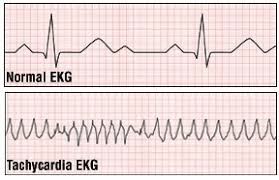Postural Orthostatic Tachycardia Syndrome (POTS) is a condition or syndrome (not a disease) that is a constellation of symptoms.
Mayo Clinic discusses POTS as orthostatic intolerance or experiencing dizziness, headaches, or light headedness and fatigue when moving from a lying to sitting or sitting to standing position. They also discuss POTS as excessive postural tachycardia, a drastic rise in heart rate (often more than 30+ heart beats per minute) upon changes in posture, typically when standing.
In our experience, POTS can have multiple causes, but most commonly we see that anxiety, infection, severe emotional traumas and stress, and traumatic brain injury or concussion are the main culprit.
If you’ve read any of our previous brain blogs, you’ve heard us discuss the cerebellum, cortex, prefrontal cortex and brainstem as the areas involved in controlling the autonomics. The autonomics is the heart rate, rhythm and pressure to the heart and lungs. What’s really interesting about POTS is that ANY area of the brain mentioned can be misfiring into the brainstem and create POTS.
In a vast majority of our patients, the Prefrontal Lobe isn’t working well enough to inhibit an anxious thought, and this allows the cuneiform nucleus to come to threshold which activates the autonomic centers rapidly and causes changes the HR to increase while the blood pressure typically stays the same or drops, giving someone the feeling they’re going to pass out and can create dizziness, headaches, visual changes etc in the process.
We’ve seen full body tremors, people fall over, individuals have panic attacks and more all because they’re system isn’t firing properly and “escapes” into these symptoms. The beauty is that at ACNC we are highly experienced in working with these conditions.
In order to heal the brain and body of POTS, and remember, this is just a syndrome, NOT a disease, we have to address all the issues related to the CAUSE of your symptoms. Sometimes people have blood sugar dysregulation, inflammation, and iron deficiency anemia that are contributing to their POTS. Other patients have genetic predisposition to Ehlers-Danlos Syndrome (EDS) and when after sustaining a concussion symptoms manifest 10-fold over someone without these issues.
So when dealing with POTS, your doctor must evaluate all aspects of your health in order to determine WHY you have what you have. Once that’s been identified, then you can effectively apply therapies to reduce symptoms and heal the autonomic nervous system (ANS) and metabolic systems.
If these symptoms and conditions we’ve discussed here have caught your attention, please contact our office for a comprehensive evaluation, so we can begin the healing process asap.

